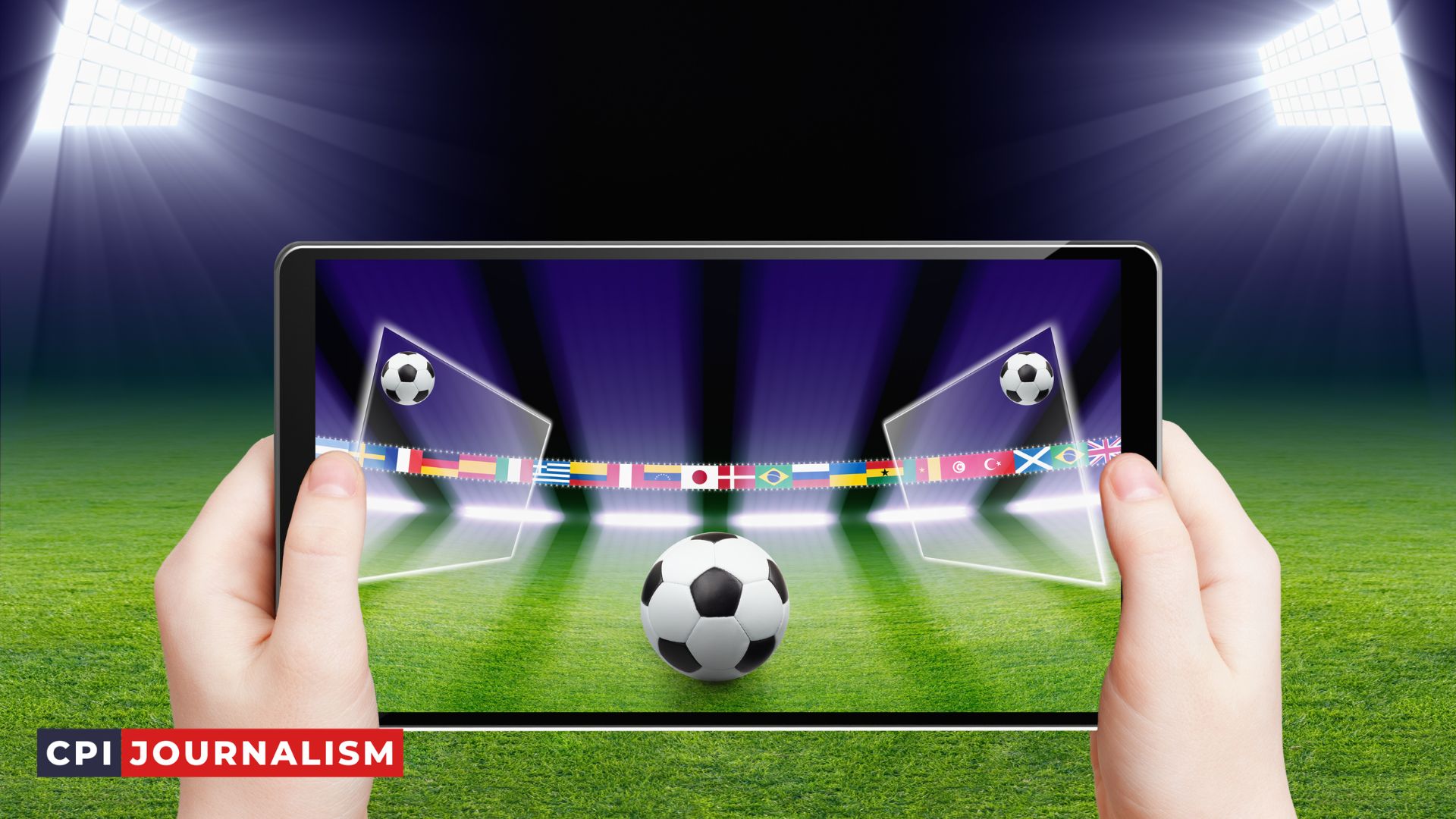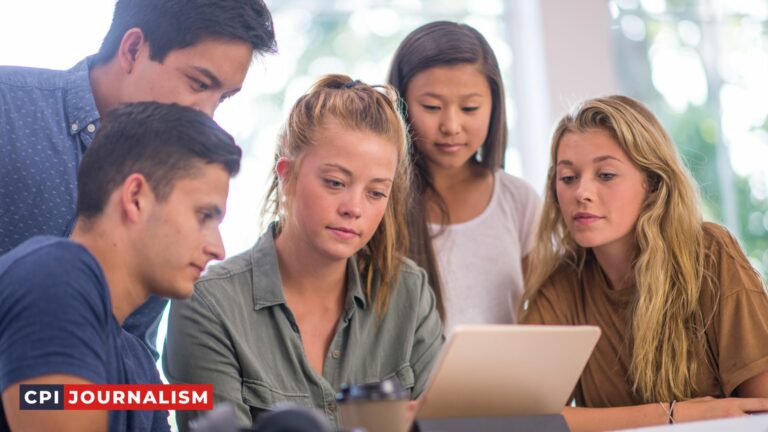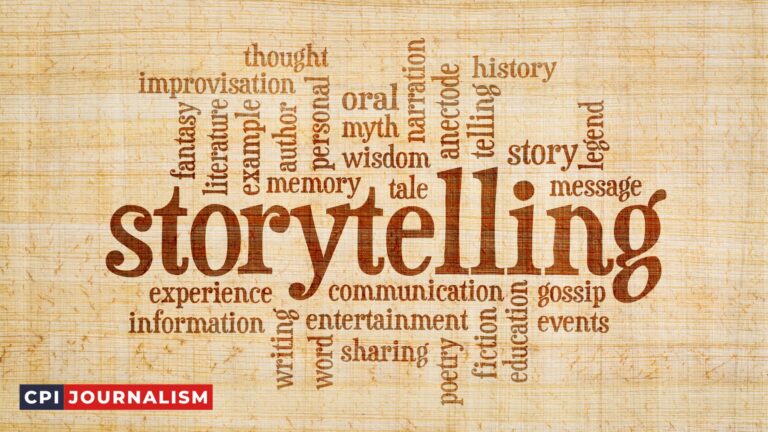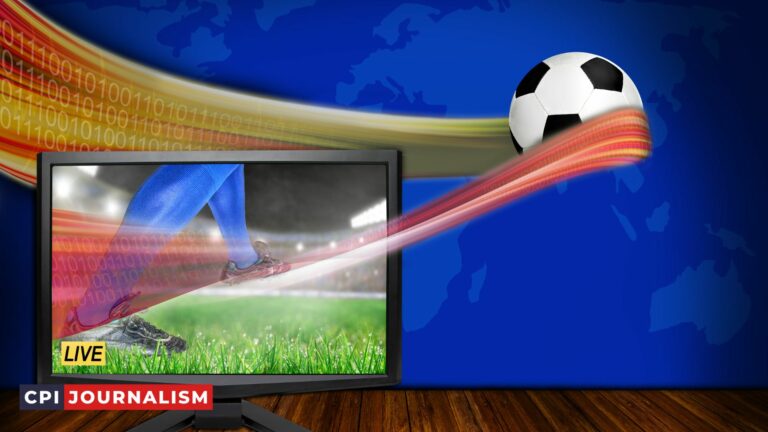What Is The Role Of Multimedia In Sports Journalism?
As an experienced journalist, I have seen firsthand the power of multimedia in sports journalism. In today’s media landscape, multimedia is essential in providing an engaging, informative, and entertaining experience for audiences.
From videos and podcasts to interactive websites and mobile applications, multimedia has become an integral component of sports journalism, playing a major role in how stories are told and received.
In this article, I’ll discuss the role of multimedia in sports journalism and its potential to revolutionize how we consume and interact with sports news.
A. Overview of the Role of Multimedia in Sports Journalism
Sports journalism has changed drastically in the last few decades due to the integration of multimedia. From static photographs to streaming video, multimedia has become an essential part of the sports media landscape.
As such, it is essential for sports journalists to understand and embrace the role of multimedia in their work.
Multimedia is a powerful tool for the sports journalist, allowing them to tell stories in a way that engages and captivates readers.
Visuals can be used to convey the energy and excitement of a game, while audio clips can bring the voices of players and coaches to life.
Additionally, multimedia can provide a more immersive experience for readers, as they can explore a story in greater depth than they could with text alone.
Multimedia can also be used to enhance traditional sports reporting. For example, reporters can use video to capture clips and highlights of a game, or audio to interview players and coaches.
Additionally, multimedia can be used to bring stories to life in a way that text and photographs cannot. Through multimedia, journalists can create compelling stories that engage readers and draw them into the narrative.
Finally, multimedia can be used to expand the reach of a story beyond the traditional media outlets. With the rise of social media, sports journalists can reach a much wider audience and engage readers in a more interactive way.
Through multimedia, sports journalists can create powerful stories that connect with readers and expand the reach of their work.
In conclusion, the role of multimedia in sports journalism is essential for both traditional and modern reporting.
By leveraging multimedia, sports journalists can create engaging stories that captivate readers and bring stories to life in a way that was not possible before.
II. Benefits of Multimedia in Sports Journalism
The introduction of multimedia into sports journalism has resulted in a number of benefits for reporters and readers alike.
Firstly, multimedia allows reporters to provide a more immersive experience for their readers by allowing them to immerse themselves in the story.
This could be done through the use of audio or video interviews, which give readers the opportunity to hear a sportsperson’s own voice rather than just reading their words.
This can also be done through the use of interactive graphics and diagrams, which allow readers to explore the story in more depth.
In addition to this, multimedia can allow reporters to provide more comprehensive coverage of a story. For example, reporters can use photos and videos to show the action as it happens, rather than relying solely on descriptions.
This provides readers with a more comprehensive understanding of the story, allowing them to gain a better insight into the subject matter.
Finally, multimedia can also provide reporters with the opportunity to reach a wider audience. For example, videos can be shared on social media and websites, allowing reporters to reach a much larger audience than they would have been able to with traditional print media.
This can be especially beneficial for smaller outlets, as it allows them to reach a much wider audience without having to invest in expensive distribution methods.
Overall, the use of multimedia in sports journalism is a great way for reporters to provide a more immersive and comprehensive experience for their readers. It also allows reporters to reach a much wider audience, which can be especially beneficial for smaller outlets.
A. Enhancing The Storytelling Experience
Multimedia has revolutionized the way sports journalism is presented. By utilizing a variety of multimedia tools such as video, audio, animations, and interactive graphics, journalists can provide their audiences with an immersive, engaging, and entertaining experience.
As a result, multimedia in sports journalism can be used to enhance the storytelling experience.
Video is one of the most powerful forms of multimedia for sports journalism. It can be used to capture the action on the field, as well as its emotional core.
Video can also be used to humanize the story, showing the athletes’ reactions and providing insights into their personalities.
For example, a journalist might interview an athlete after a game or event and use the video to create a more personal, human story.
Audio is another powerful tool for sports journalism. It can be used to capture the atmosphere and emotion of a particular game or event, as well as to provide insights into the players and coaches.
Audio can be used in interviews, during post-game press conferences, and during halftime or post-game analysis.
Animations can also be used to bring a story to life. Animations can be used to visually represent the action of the game, or to provide a more in-depth analysis of the strategies and tactics used by the players and coaches. Animations can also be used to provide an entertaining and engaging visual experience for viewers.
Finally, interactive graphics can be used to provide a more in-depth look at the game. By providing viewers with an interactive experience, journalists can help them better understand the strategies and tactics used by the players and coaches.
Interactive graphics can also be used to provide a more comprehensive analysis of the game.
In conclusion, multimedia in sports journalism is a powerful tool for enhancing the storytelling experience. By utilizing video, audio, animations, and interactive graphics, journalists can create an immersive, engaging, and entertaining experience for viewers.
B. Increasing Engagement
In order to increase engagement with a sports journalism piece, multimedia can be used in a variety of ways. First and foremost, engaging visuals are a great way to draw readers in and keep their attention.
This could consist of photos, videos, and even infographics. All of these elements can provide an interactive experience that allows readers to engage with the story in a more meaningful way.
Another way to increase engagement is through the use of storytelling. Many sports journalists rely on narrative techniques to draw readers into the story, and multimedia can help to enhance this.
Audio clips, videos, and even interactive elements can help to bring the story to life and make it more engaging for the reader.
Finally, multimedia can be used to create a more interactive experience for readers. By incorporating interactive elements such as polls, quizzes, and even games, readers can have a more active role in the story.
Not only does this encourage engagement, but it also gives readers a sense of ownership that can lead to a more positive experience overall.
Overall, incorporating multimedia into a sports journalism piece can be a great way to increase engagement with the story. By utilizing engaging visuals, storytelling techniques, and interactive elements, sports journalists can create a more engaging experience for their readers.
C. Enhancing The Visuals
Visuals are essential for sports journalism, as they help to not only capture the excitement and drama of a sporting event, but also provide viewers with a tangible way to recall memorable moments. To enhance the visuals in sports journalism, experienced journalists must use a variety of creative techniques.
First and foremost, experienced journalists should strive to capture the best possible images and videos of a game or event.
This requires getting as close to the action as possible, such as setting up a camera in the stands, on the sidelines, or in the locker room.
Additionally, using multiple cameras and varying camera angles, such as a wide-angle shot or a close-up, will help to tell the story in a more compelling way.
In addition to capturing the best visuals, journalists should also be mindful of how they edit and present the visuals. This includes selecting the right music and sound effects, adding in graphics and animation, and using dynamic transitions between shots.
Furthermore, experienced journalists should consider incorporating interactive elements, such as polls and quizzes, to engage the audience and create an immersive experience.
Finally, experienced journalists should ensure that the visuals are available in multiple formats and platforms.
This includes making sure the visuals are optimized for mobile devices as well as for streaming services such as YouTube and Twitch.
By doing so, journalists can ensure that their visuals reach a wider audience and make a lasting impact.
By utilizing these techniques, experienced journalists can ensure that their visuals are both high-quality and engaging, and thus help to make sports journalism even more captivating.
D. Enhancing Accessibility
Multimedia has revolutionized the way sports journalism is delivered to the public. With the introduction of digital media, sports news can now be accessed from any device with an internet connection.
This has made it easier for fans to stay up to date with the latest developments in their favorite teams, leagues, and athletes.
Furthermore, multimedia has enabled sports journalists to create content that is more engaging and informative than ever before.
Through creative use of audio, video, and animation, sports journalists can bring news stories to life in a way that words simply cannot.
This helps to make sports journalism more accessible and enjoyable for the audience, while also providing more comprehensive coverage of the subject.
Finally, multimedia can also be used to provide access to sports news and information to those who may not have access to traditional media outlets.
For example, sports journalists can use new media such as podcasts, live streaming, and social media to reach a wider audience, allowing them to spread their message to a global audience.
This ensures that no one is left out of the conversation and provides a platform for everyone to get involved.
E. Enhancing Reach
Reach is a major factor for any successful sports journalism endeavor. Fortunately, multimedia provides a great way for journalists to extend their reach and ensure that their stories are seen by as many people as possible.
By leveraging a mix of multimedia formats – including videos, podcasts, infographics, and interactive content – journalists can create a comprehensive package that encourages viewers to engage and share their work.
Videos can be used to capture the action and emotion of a sporting event while also providing a visual storytelling platform. Podcasts can provide deeper insight into the sport and its athletes.
Infographics can help to break down complex topics and make them easier to understand. And interactive content can be used to engage viewers and provide them with an immersive experience.
In addition to multimedia formats, journalists can also take advantage of various social media platforms to reach more viewers.
By using Twitter, Instagram, and Facebook, journalists can quickly share their work and engage with their audience.
They can also use these platforms to promote their stories, interact with their followers, and get feedback from their readers.
By strategically leveraging multimedia formats and social media platforms, sports journalists can significantly increase their reach and ensure that their stories are seen by as many people as possible.
III. Challenges of Multimedia in Sports Journalism
The use of multimedia in sports journalism presents a variety of challenges for journalists. Multimedia sports reporting requires a high level of technical skill and knowledge, particularly when it comes to the use of video, audio, and photography.
For example, when shooting video, journalists need to be familiar with digital cameras and editing software and have an understanding of the basics of composition and lighting.
Audio recording also requires technical knowledge and the ability to operate specialized audio equipment.
In addition, multimedia sports journalism requires a deep understanding of the sports being reported on. Journalists must be able to break down the sports coverage into elements that will effectively engage the audience, such as creating visuals and audio elements that add depth to the story.
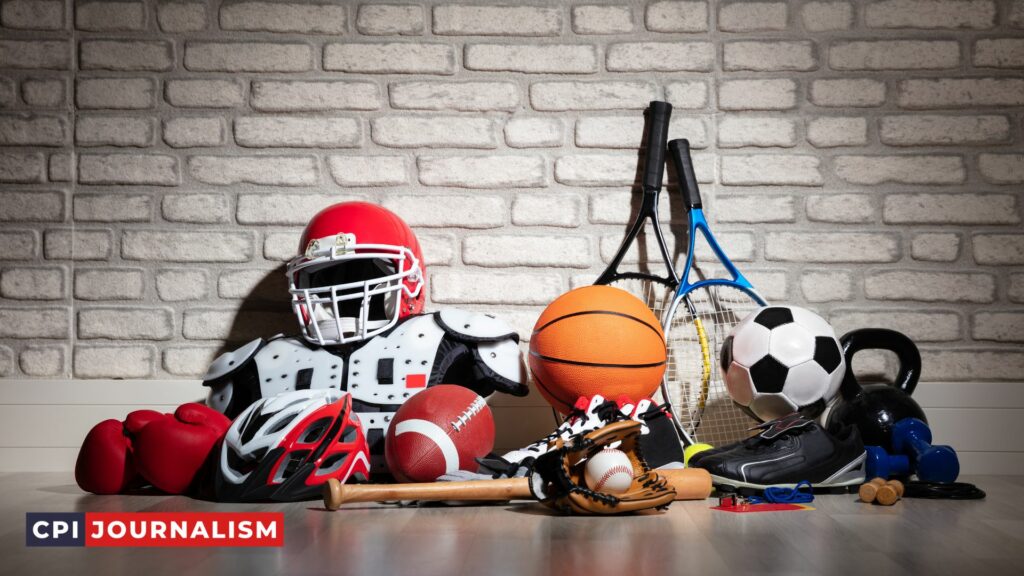
Multimedia sports journalism also requires a high level of organizational and multitasking skills, as journalists must be able to manage multiple projects and handle a variety of tasks simultaneously. They must be able to simultaneously design content, shoot video, collect audio, and write stories.
Finally, multimedia sports journalism requires an understanding of copyright law. Journalists must be familiar with the copyright laws that govern the use of images, audio, and video, as well as the laws that govern the use of other materials, such as music and logos.
A. Cost of Production
The cost of producing multimedia for sports journalism is an important factor to consider. Due to the need for specific equipment, multimedia production can be expensive.
For example, many sports reporters require cameras, microphones, and other audio/visual equipment to capture the action. Additionally, the use of special software and editing tools to produce multimedia content can be costly.
Therefore, it is important to factor in the cost of production when considering the role of multimedia in sports journalism.
This cost can include not only the purchase of the necessary equipment and software, but also the cost of training reporters and editors in their use.
Furthermore, depending on the type of multimedia content being created, there may be additional fees associated with obtaining the necessary licenses or permissions.
In addition to the cost of production, there is also the potential for increased time investment. Producing multimedia content often requires more time to create than traditional news stories, so reporters need to be prepared for this additional investment of time.
In conclusion, it is important to consider the cost of production when considering the role of multimedia in sports journalism.
The costs associated with purchasing the necessary equipment and software, training reporters and editors, and obtaining licenses and permissions should all be taken into account when making decisions about incorporating multimedia into sports journalism.
Additionally, reporters should be aware of the potential for increased time investment when producing multimedia content.
B. Technical Challenges
In sports journalism, utilizing multimedia can pose some technical challenges that journalists need to be aware of. One of the primary challenges is the processing and delivery of multimedia content.
It is important to remember that multimedia is composed of multiple components, such as audio, video, and text. Each of these components must be processed and delivered separately.
In addition, the delivery of multimedia content can present a challenge, especially when it is being delivered over the internet. This requires a reliable and secure connection, as well as an understanding of various streaming protocols.
Another technical challenge is the editing of multimedia content. Editing video, audio, and text all require special skills and knowledge. Journalists must be familiar with editing software in order to create and manipulate multimedia content.
Finally, sports journalism often requires the use of special equipment, such as cameras, microphones, and other recording devices.
Journalists must be familiar with the operation of this equipment and know how to use it correctly in order to capture and deliver high quality multimedia content.
These are just some of the technical challenges that sports journalists face when utilizing multimedia in their reporting. It is important for journalists to be aware of these challenges and be prepared to address them in order to deliver the best possible content to their audience.
C. Copyright Issues
As with any multimedia content, copyright issues are an important consideration for sports journalists. Copyright laws are designed to protect the creators of original works, and it is important that journalists respect these laws when creating multimedia content.
When creating content, journalists should make sure they have permission to use any images, videos, or audio they include.
This includes both content they create themselves and content they use from other sources. If they create their own content, they should make sure they have the right to distribute it.
When using content from other sources, journalists should make sure they have permission to use the content. This includes obtaining a license to use the content, which may require payment. In addition, journalists should make sure to properly attribute the source of any content they use.
Finally, journalists should make sure to protect their own content from copyright infringement. This can be done by including a copyright notice on the work and registering it with the appropriate copyright office, where available.
By understanding copyright laws and taking the necessary steps to protect their own content, journalists can ensure that their multimedia content is legally created and distributed.
D. Lack Of Resources
For many sports journalists, the lack of resources is a major hurdle when it comes to incorporating multimedia into their work. This can range from a lack of technical infrastructure and access to the necessary equipment, to a lack of budget to purchase or rent the necessary equipment.
Additionally, many sports journalists may not have the technical skills needed to create multimedia content, or the resources to hire someone to help them.
In addition to the cost of equipment, there are also the costs associated with hosting multimedia content online. Sports journalists need to be aware of the costs associated with hosting multimedia content on their website, as well as the costs associated with streaming live events to viewers.
Finally, sports journalists need to be aware of the legal and ethical implications of using multimedia. It is important to ensure that all content used is properly licensed and that all copyright laws are respected.
Additionally, sports journalists need to be aware of the privacy implications of using multimedia, as well as any regulations or laws that may apply.
E. Lack Of Training
For aspiring journalists, it is important to remember that multimedia sports journalism is much more complex than traditional print media. As such, it requires extensive training and experience to properly use the tools and techniques necessary for success.
Unfortunately, many journalism programs and media outlets do not provide adequate training in multimedia journalism, leaving aspiring journalists ill-equipped to take advantage of the opportunities the field provides.
Those who are interested in multimedia sports journalism should make sure they seek out appropriate training and educational opportunities.
This could include reading up on various technologies and platforms, taking classes or workshops, and networking with experienced multimedia sports journalists. Additionally, they should always be on the lookout for new tools and techniques that can help them better tell their stories.
Finally, aspiring multimedia sports journalists should understand the importance of staying current and up-to-date on the latest technologies and techniques. By understanding the latest trends and being able to use the latest tools,
journalists can ensure that their stories are engaging and compelling. This requires a dedication to learning and furthering one’s knowledge, which is essential for any successful journalist.
IV. Examples of Multimedia in Sports Journalism
Sports journalism has become increasingly reliant on multimedia elements to provide a comprehensive and immersive experience to its readers and viewers.

Here are some of the more common examples of multimedia in sports journalism.
1. Video Highlights – One of the most popular forms of multimedia in sports journalism is the use of video highlights. These are clips of the major plays or moments of a game, typically between thirty seconds and two minutes in length. They are used to capture the best moments of the game and provide viewers with a brief overview of the game.
2. Interviews – Journalists also make use of multimedia elements to conduct interviews with players, coaches, and other sports personnel. These interviews are usually conducted in a video format and are used to gain insight into the thoughts and opinions of the people involved in the game.
3. Analysis – Multimedia is also used to provide analysis of games or players. This can be done through the use of video clips, statistical analysis, or written analysis. This allows for a more comprehensive look at a game or player, providing viewers with a deeper understanding of the game.
4. Social Media – Social media has become increasingly important for sports journalism. Journalists often use social media to engage with their readers and viewers, providing them with up-to-date information and insights on the game. They can also use social media to poll their readers on their opinions and insights on the game.
These are just some of the many examples of multimedia in sports journalism. As technology continues to improve, the amount of multimedia elements used in sports journalism will likely increase as well. This will provide viewers with an even more immersive and comprehensive experience.
A. Video
As an experienced sports journalist, I cannot emphasize enough the importance of video in sports journalism.
Video has become an increasingly essential tool in our industry, and it’s one of the most exciting and effective ways to tell the story of a sporting event.
Video can be used in a variety of ways in sports journalism. It can be used to capture the action on the field, court, or track, providing viewers with a first-hand account of the event.
It can also be used to document the reactions of fans, players, and coaches, giving an emotional and personal angle to the story.
Video can also be used to help explain the finer points of a sport, providing viewers with a better understanding of the rules and strategies.
In addition to capturing the action, video can be used to create powerful multimedia stories. By combining video with audio, narration, and other elements, journalists can create powerful packages that give viewers an in-depth look at a sporting event.
Video can also be used to create highlight reels and other visual packages, allowing journalists to quickly and easily share the most important moments of a game with their viewers.
Video has become an essential tool in sports journalism, and it’s a great way to tell the story of a sporting event.
With video, journalists can capture the action and emotion of a sporting event, and create powerful multimedia packages that give viewers an in-depth look at the event.
B. Audio
Audio is a powerful tool in sports journalism, and it can be used to bring stories to life in a way that words and images alone cannot.
Audio can provide a unique insight into the events that are being reported on, allowing the audience to get a sense of the atmosphere and the emotions of those involved.
Audio can be collected from interviews, press conferences, and even from the actual sports being reported on. By recording sound from the field, the audience can hear the energy of the crowd, the buzz of the commentators, and the excitement of the athletes as they compete.
Audio recordings can also provide an opportunity to capture the stories of the athletes, giving their side of the story in their own words.
In addition to providing a unique perspective, audio can also be used to add a layer of authenticity to stories. By including sound recordings from the event itself, the audience can trust that the story is being reported accurately and honestly.
Finally, audio can be used to create engaging multimedia experiences. By combining audio recordings with video footage and still images, the story can be brought to life in a way that words alone cannot.
This allows the audience to get a true sense of the event and its impact, creating a memorable experience that is far more powerful than a simple written report.
C. Interactive Graphics
Interactive graphics are an essential component of multimedia sports journalism today. With the advent of new technologies, interactive graphics allow journalists to provide readers and viewers with an immersive, engaging experience.
Interactive graphics allow journalists to display data in an effective and visually appealing manner. They can be used to illustrate player and team performance, compare stats across divisions, or chart the progress of a team throughout the season.
Interactive graphics also allow journalists to provide their audiences with an interactive experience. For example, they may use interactive graphics to provide readers with the opportunity to analyze data, such as a player’s average performance across a given season.
They may also provide readers with the opportunity to explore a player’s journey, such as tracking their career highlights across different teams.
With interactive graphics, journalists can also provide readers with the opportunity to explore the context of sports stories. For example, they may provide readers with an interactive map of a team’s home stadium or a timeline of a player’s career.
Interactive graphics are powerful tools for sports journalists, allowing them to create engaging, informative stories that bring the sports world to life.
D. Social Media
Social media has had a major impact on the world of sports journalism. It has opened up a new platform for journalists to bring their stories to the public in a more immediate way.
This has allowed for sports reporters to get their stories out quickly and easily, and to reach a larger audience.
Social media has also allowed for fans to interact with reporters and share their opinions about the teams, players, and stories that make up the world of sports journalism.
This has given sports reporters a way to get feedback from their readers and to gain insight into what fans are thinking and feeling.
In addition, social media has allowed reporters to build relationships with their readers. This has provided a unique platform for reporters to gain followers and build a network of readers who are interested in the stories that they cover.
This network can help to spread the word about stories, and can help to increase the reach of a given story.
Overall, social media has had a major impact on sports journalism. It has allowed for reporters to get their stories out quickly and easily, to reach a larger audience, and to build a network of readers. As a result, social media has become an important tool for sports journalists as they seek to bring their stories to the public.
E. Virtual Reality
Virtual reality (VR) technology is rapidly becoming a powerful tool for sports journalism. With the emergence of technologies such as Oculus Rift and Google Cardboard, immersive experiences and enhanced storytelling capabilities are available to viewers.
VR has the potential to revolutionize the way sports journalism is conducted. It can give viewers a much more immersive and interactive experience, as well as providing reporters with a new way to tell stories.
For instance, reporters can use 360-degree video or 3D images to give viewers a more realistic experience of a game or match.
Additionally, reporters can use interactive elements, such as interactive maps and virtual tours, to take viewers on a journey to a particular stadium or location. This can be particularly useful for reporters who are covering games in other countries.
Finally, VR can also be used to enable reporters to create interactive stories. For instance, reporters can create interactive timelines, which enable viewers to explore different aspects of a particular game or match.
Additionally, reporters can also incorporate interactive elements such as polls and quizzes to engage viewers with the story.
Overall, virtual reality technology has the potential to revolutionize the way sports journalism is conducted. With its enhanced storytelling capabilities and immersive experiences, VR can enable reporters to tell stories in a much more engaging and interactive way.
V. Conclusion
The role of multimedia in sports journalism is an essential one. It has revolutionized the way in which sports news is delivered and has enabled journalists to tell stories in new and creative ways.
It has also allowed sports journalists to provide a more comprehensive coverage of sporting events, enabling them to be more in-depth and insightful in their reporting.
As a result of the growth of multimedia in sports journalism, both the audience and the media have benefited.
The audience has been able to access more information and gain a deeper understanding of the sports they are watching. Meanwhile, the media has been able to reach a wider audience and tell more complex stories.
Ultimately, the impact of multimedia on sports journalism has been a positive one. It has enabled journalists to tell stories in more engaging and effective ways, while also providing the audience with more comprehensive and in-depth coverage of the sports they love.
A. Summary of the Role of Multimedia in Sports Journalism
Multimedia in sports journalism has become an integral part of the industry. It provides both journalists and readers with a more immersive experience of the game, which is essential in today’s highly visual culture.
Multimedia can take many forms, such as videos, photos, and interactive graphics, as well as live streaming of games. It provides a more comprehensive and engaging way of telling stories, as well as a more efficient way for journalists to produce content.
Using multimedia in sports journalism can help to enhance the storytelling of the game, through the use of visuals such as photos, videos and infographics. Photos can be used to give readers an emotional connection to the story.
Videos can be used to provide highlights of the game, or to capture poignant moments in the game. Interactive graphics can be used to explain complex plays or strategies.
Live streaming of games can also be used to provide a more immersive experience, allowing viewers to feel as though they are at the game itself.
Multimedia also provides a more efficient way for journalists to produce content. It can be used to quickly and easily create video packages or highlight reels, which can be used to supplement written stories.
It also allows journalists to quickly compile data and statistics, which can be used to provide an in-depth analysis of the game. Additionally, it can be used to create podcasts and other audio content, giving readers a more immersive experience.
In conclusion, multimedia has become an important tool in sports journalism. It can be used to enhance the storytelling of the game, as well as to provide a more efficient way for journalists to produce content.
It is an invaluable tool for sports journalists, and one that should be embraced in order to create compelling and engaging stories.
B. Benefits Of Utilizing Multimedia In Sports Journalism
The use of multimedia in sports journalism has numerous advantages for both journalists and readers. By utilizing multimedia, journalists have a much more powerful way of communicating their stories to readers.
Here are some of the benefits of utilizing multimedia in sports journalism:
1. Enhanced Engagement: Multimedia can be used to engage readers in a more interactive and meaningful way than traditional text-based journalism.
Through the use of visuals, audio, and video, readers can be immersed in the story and gain a greater understanding of the issues and events being discussed.
2. Reach a Wider Audience: By using multimedia, journalists can reach a wider global audience. With video, audio, and images, readers can access stories from anywhere in the world and gain a better understanding of events taking place around the globe.
3. Increased Interactivity: Multimedia allows for increased interactivity between journalists and readers. Through the use of polls and surveys, readers can provide feedback on stories and give their opinion on the issues being discussed.
This provides a more personalized experience for readers and allows them to become more involved in the stories.
4. Improved Visual Appeal: Utilizing multimedia can also improve the visual appeal of stories. Through the use of visuals, audio, and video, journalists can create a more engaging and dynamic story that is more appealing to readers.
Overall, utilizing multimedia in sports journalism has numerous advantages for both journalists and readers. By using multimedia, journalists can reach a wider audience, engage readers in a more interactive way, and improve the visual appeal of their stories.
This can lead to increased engagement and understanding of the issues being discussed.
C. Challenges of Utilizing Multimedia in Sports Journalism
The use of multimedia in sports journalism can present several challenges for journalists. For starters, the production of multimedia content can be a time-consuming and costly process.
Multimedia content such as videos and podcasts require technical expertise and equipment that can be difficult and expensive to obtain. Additionally, journalists must ensure that they are collecting images and videos in accordance with all copyright laws.
Another challenge of multimedia in sports journalism is the need to constantly be updated on the latest technology and trends.
Journalists must keep up to date on the latest technological advances in order to produce the most engaging and informative multimedia content.
It is also important for journalists to be able to discern which types of content are most appropriate for each story.
Finally, the use of multimedia in sports journalism can be a challenge for those who are not familiar with the technology.
As with any new technology, there is a learning curve involved in order to produce content that is of the highest quality.
Journalists must be willing to take the time to understand the technology and the best practices for producing multimedia content.

